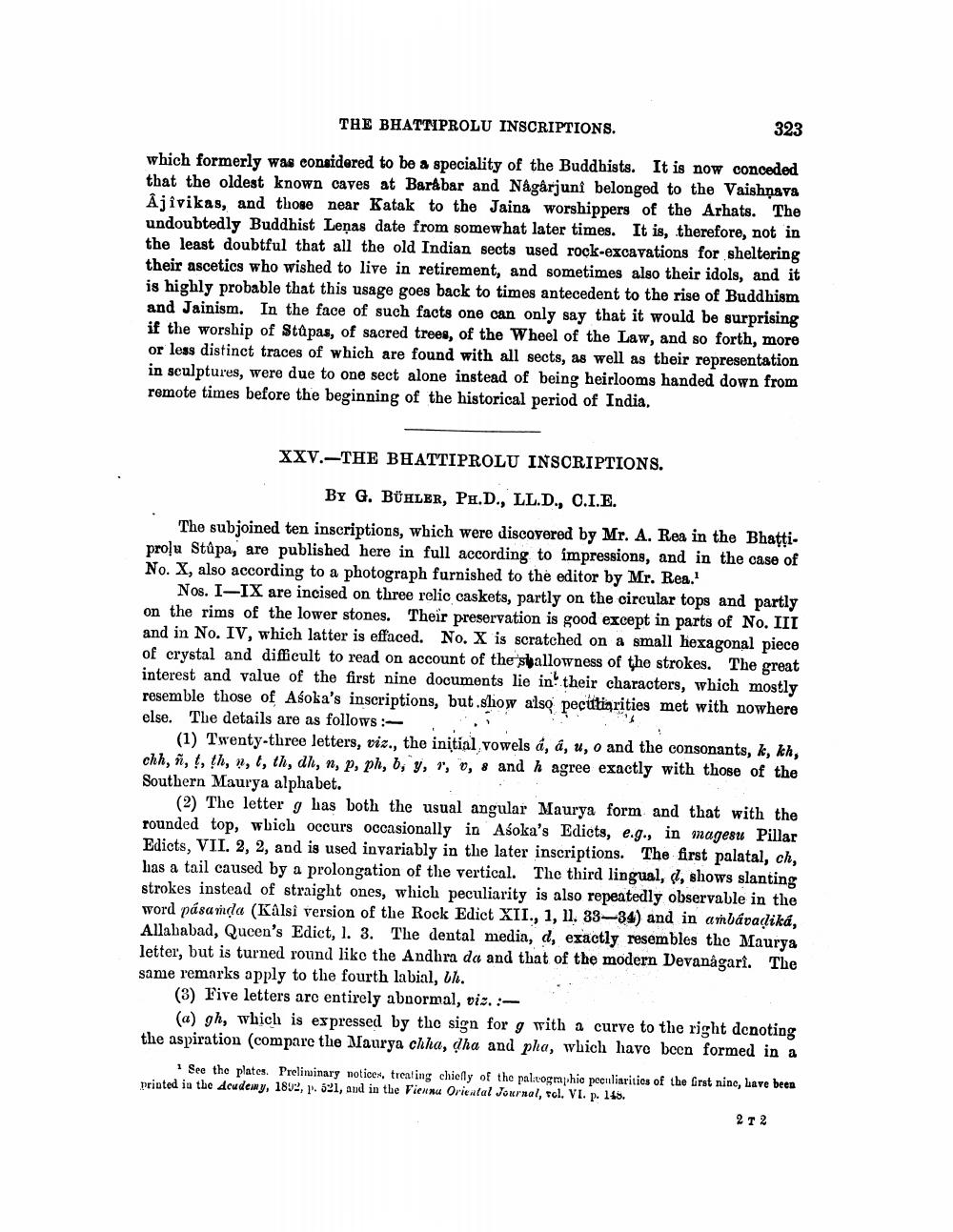________________
THE BHATTIPROLU INSCRIPTIONS.
which formerly was considered to be a speciality of the Buddhists. It is now conceded that the oldest known caves at Barabar and Nagarjunî belonged to the Vaishnava Ajivikas, and those near Katak to the Jaina worshippers of the Arhats. The undoubtedly Buddhist Lenas date from somewhat later times. It is, therefore, not in the least doubtful that all the old Indian sects used rock-excavations for sheltering their ascetics who wished to live in retirement, and sometimes also their idols, and it is highly probable that this usage goes back to times antecedent to the rise of Buddhism and Jainism. In the face of such facts one can only say that it would be surprising if the worship of Stupas, of sacred trees, of the Wheel of the Law, and so forth, more or less distinct traces of which are found with all sects, as well as their representation in sculptures, were due to one sect alone instead of being heirlooms handed down from remote times before the beginning of the historical period of India.
323
XXV.-THE BHATTIPROLU INSCRIPTIONS.
BY G. BÜHLER, PH.D., LL.D., C.I.E.
The subjoined ten inscriptions, which were discovered by Mr. A. Rea in the Bhattiproju Stúpa, are published here in full according to impressions, and in the case of No. X, also according to a photograph furnished to the editor by Mr. Res.
Nos. I-IX are incised on three relic caskets, partly on the circular tops and partly on the rims of the lower stones. Their preservation is good except in parts of No. III and in No. IV, which latter is effaced. No. X is scratched on a small hexagonal piece of crystal and difficult to read on account of the shallowness of the strokes. The great interest and value of the first nine documents lie in their characters, which mostly resemble those of Aśoka's inscriptions, but.show also peculiarities met with nowhere else. The details are as follows:
(1) Twenty-three letters, viz., the initial vowels á, á, u, o and the consonants, k, kh, chh, ñ, t, th, n, t, th, dh, n, p, ph, b, y, r, v, 8 and agree exactly with those of the Southern Maurya alphabet.
(2) The letter g has both the usual angular Maurya form and that with the rounded top, which occurs occasionally in Aśoka's Edicts, e.g., in magesu Pillar Edicts, VII. 2, 2, and is used invariably in the later inscriptions. The first palatal, ch, has a tail caused by a prolongation of the vertical. The third lingual, d, shows slanting strokes instead of straight ones, which peculiarity is also repeatedly observable in the word pásamḍa (Kalsi version of the Rock Edict XII., 1, 11, 33-34) and in ambávaḍiká, Allahabad, Queen's Edict, 1. 3. The dental media, d, exactly resembles the Maurya letter, but is turned round like the Andhra da and that of the modern Devanagari. The same remarks apply to the fourth labial, uh.
(3) Five letters are entirely abnormal, viz. :
(a) gh, which is expressed by the sign for g with a curve to the right denoting the aspiration (compare the Maurya chha, dha and pha, which have been formed in a
See the plates. Preliminary notices, treating chiefly of the paleographic peculiarities of the first nine, have been printed in the Academy, 1892, p. 521, and in the Fienna Oriental Journal, vol. VI. p. 145.
2T2




